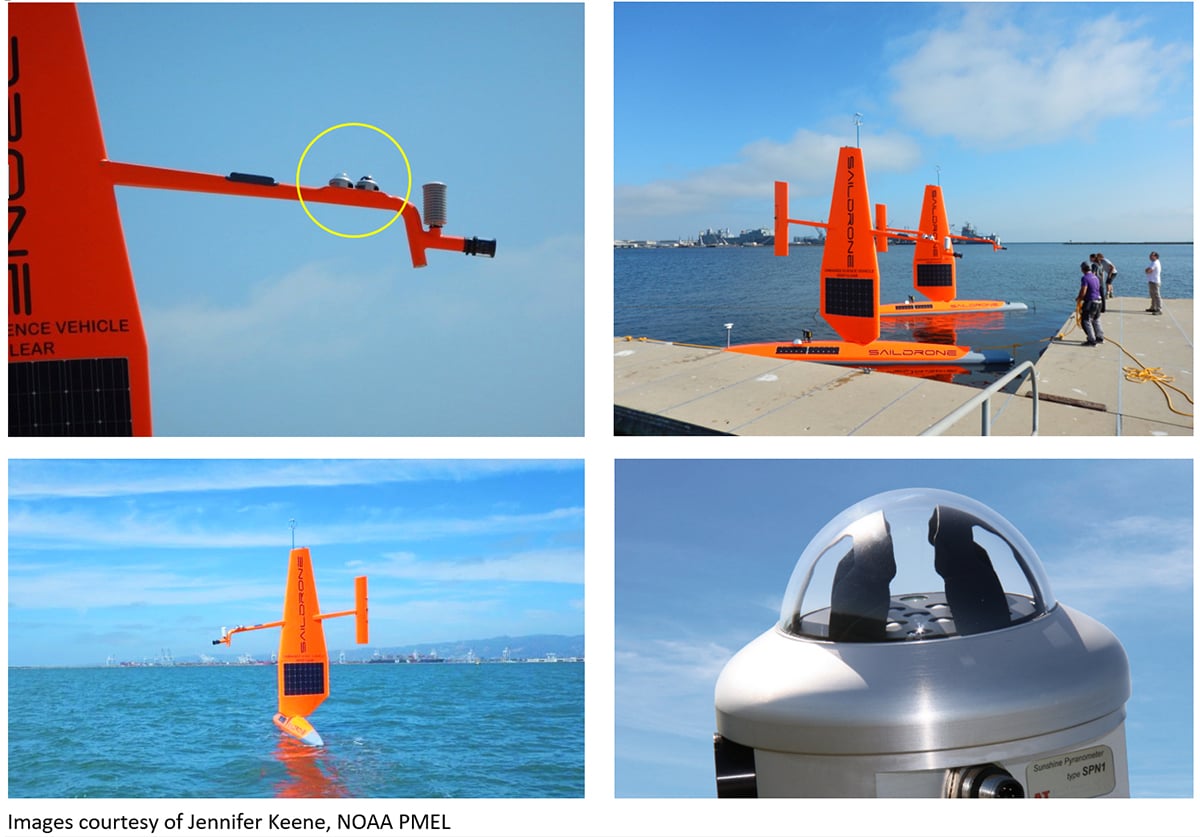Delta-T Devices’s SPN1 Sunshine Pyranometer is being used to record solar radiation data aboard two Saildrones on a six-month, 4,000 nautical mile mission to the equator and back. The aim is to develop and extend the work of the existing Tropical Pacific Observing System.
Saildrones (pictured below) are highly innovative autonomous sailing drones, which can be remotely programmed and fitted with a wide variety of measurement sensors. Launched and retrieved from a dock, each Saildrone navigates to its destination using wind power alone, travelling at 3-5 knots.
This exciting new technology makes it possible to perform important ocean-based research at a fraction of the cost of traditional methods, and is already being used to collect data for environmental monitoring, meteorological studies, and fish-stock analysis projects.
The two Saildrones fitted with SPN1 Pyranometers set out on their mission from San Francisco Bay on Sept 1st 2017 and are due to complete in February 2018. The Saildrones will visit mooring sites that are part of the existing tropical observing array to carry out comparisons, and will also participate in a larger field study with NASA.

The mission’s core aim is to assess whether the Saildrone can provide meteorological measurements at a quality that matches research ships and proven mooring technology. If, as anticipated, this is the case, Saildrones will become a powerful and cost effective new method for providing key observations for long-term weather forecasts.
The SPN1 Pyranometer is a powerful and unique solar radiation sensor that is particularly rugged and features no moving parts. It measures global (total) and diffuse radiation, and sunshine state – all in one compact, internally heated, research grade instrument.
More information on the SPN1 Pyranometer
More information on Saildrones

